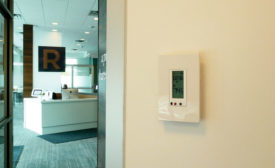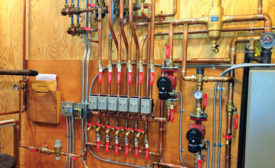Home » zoning market
Articles Tagged with ''zoning market''
Industry event features new technology, technical training, trade show, and more
Read More
Duct Dynasty: Prevent Airflow Problems with Replacement Indoor Coils
Be sure to accurately measure pressure drop and acknowledge the number of fins per inch
Read More
Project Files: Efficiently Intelligent Apartments
Building automation solution
May 23, 2016
Comparing and Contrasting Different Ductless System Designs
Single- and multi-zone ductless systems both have roles to play in the HVAC industry’s future
Read More
20 Ways to Use Magnets in Your Marketing
Creative ways to affix your company’s name to customers’ refrigerators
Read More
Bypass Ducts, Zoning Receive Boost from AHRI
New study finds positive effects when properly installing bypass dampers
Read More
Hydronic Zoning Offers Exceptional Comfort, Versatility
Improvements in efficiency and connectivity have made hydronic zoning an appealing option
Read More
Ductless Continues to Mature in the American HVAC Market
VRF and multi-zone functionality are gaining traction across the country
Read More
Copyright ©2024. All Rights Reserved BNP Media.
Design, CMS, Hosting & Web Development :: ePublishing















